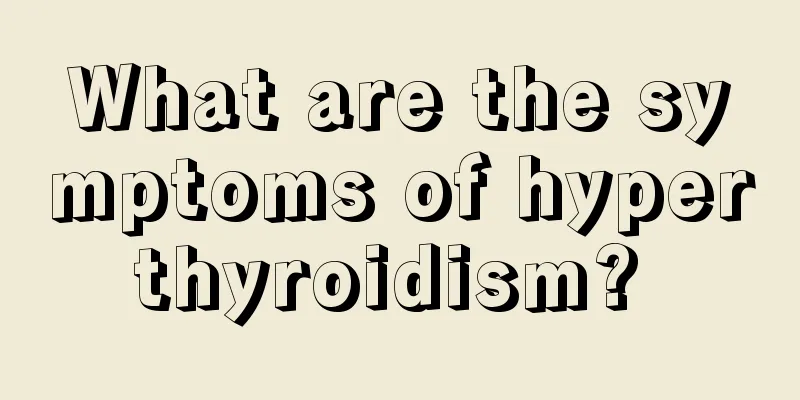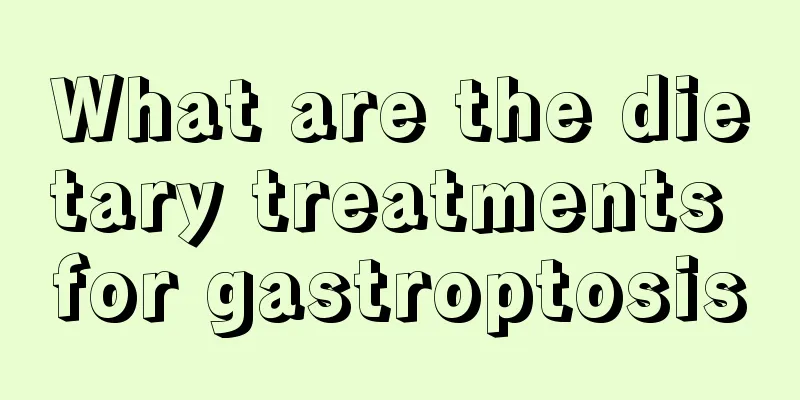What are the symptoms of hyperthyroidism?

|
Hyperthyroidism is a common disease that occurs in people between the ages of 20 and 40, and is more common in women than in men. This also shows that young and middle-aged people are the main group for preventing hyperthyroidism. The obvious characteristics of this disease are regional characteristics. It is worth noting that this disease also has the characteristics of onset in adolescence, but the symptoms are milder. Let’s take a look at the following introduction to the specific symptoms of hyperthyroidism. (1) Abnormalities in energy metabolism and sugar, protein, and fat metabolism: In hyperthyroidism, the basal metabolic rate (BMR) increases, which may lead to hot flashes, sweating, weight loss, low work efficiency, muscle wasting, weakness, fatigue, negative balance of protein metabolism, decreased or normal cholesterol, disappearance of subcutaneous fat, accelerated fat metabolism, increased breakdown of liver and muscle glycogen, accelerated glycogenolysis, increased blood sugar or postprandial hyperglycemia. Severe abnormalities in sugar metabolism may lead to diabetes. (2) Disorders in water-salt metabolism and vitamin metabolism: Thyroid hormones can promote diuresis, potassium excretion and magnesium excretion. Therefore, hypokalemic periodic paralysis and hypomagnesemia are prone to occur in hyperthyroidism. The movement of calcium and phosphorus is accelerated, and there is often high urine calcium, high urine phosphorus and high urine magnesium. Over time, bone decalcification and osteoporosis may occur. When hypocalcemia occurs and the patient does not take in enough calcium, a small number of patients may develop secondary hyperparathyroidism. At the same time, due to poor absorption, rapid metabolism and high consumption in hyperthyroidism, multiple vitamin deficiencies such as vitamin B1, C, D and trace element deficiencies may occur. (3) Symptoms of abnormal skin and muscle metabolism: negative metabolic balance of protein, negative balance of creatine, negative balance of nitrogen, decreased ATP, decreased creatine phosphate, prone to hyperthyroid myopathy, eye muscle weakness, myasthenia gravis, or frequent flaccid paralysis, myxedema of the skin, more common on the eyelids and anterior tibia, softening or deformation and infection of nails. Negative balance of protein, negative balance of creatine, negative balance of nitrogen (4) Symptoms of the cardiovascular system: Thyroid hormones excite the myocardial sympathetic nerves and enhance the effects of catecholamines, resulting in tachycardia, arrhythmia, increased heart sounds, increased pulse pressure, and even cardiac enlargement and apical systolic murmur. The elderly are prone to atrial fibrillation, angina pectoris, and even hyperthyroid heart disease and coronary heart disease, leading to heart failure. (5) Mental and nervous system symptoms: Thyroid hormones can excite nerves and muscles, which can easily cause mental tension, impatience, agitation, insomnia, dizziness, worry, irritability, talkativeness, hand tremors, hyperreflexia, and in severe cases, hyperthyroidism psychosis and autonomic dysfunction may occur. |
<<: What are the symptoms of Hashimoto’s thyroiditis?
>>: The impact of high aspartate aminotransferase
Recommend
Can soaking your feet in hot water at night improve spleen deficiency?
Soaking your feet in hot water at night can sligh...
How to improve severe hair breakage?
Hair is very important for image, and broken hair...
How to stretch to grow taller
As the saying goes, people grow taller at the age...
What should I do if I have moderate intestinal metaplasia in atrophic gastritis?
Patients with moderate intestinal metaplasia due ...
Behaviors that harm the liver
Since when, liver disease has become a disease th...
Does pear contain vitamin C?
Pears are a fruit we often eat. As we all know, p...
What is the blood pressure? Is blood pressure low?
Recently, a large number of patients have been tr...
People who are competitive are prone to a disease
As the saying goes, people go to high places and ...
Can wolfberry still be eaten after it expires
Everyone is very familiar with wolfberry. Wolfber...
What are the benefits of roses
Rose is a kind of flower that many women love ver...
What to eat if you have uterine cancer
Oncologists point out that uterine cancer is very...
What medicine is better to take in the early stage of brain cancer
What medicine is better for the early stage of br...
What to do if back pain and chest discomfort are caused by coldness
In life, many people do physical work, and they w...
What is the cause of lower abdominal pain during bowel movements?
Under normal circumstances, people will not exper...
Why does my butt itch at night?
I don’t know if you have ever had this experience...









